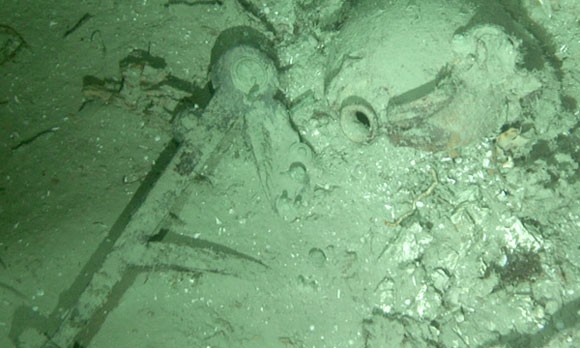While conducting research underwater, exploring deep sea methane, researchers have accidentally discovered a shipwreck from the North Carolina coast that originated from American Revolution period.
Researchers from Duke University uncovered this never before discovered shipwreck on Sunday, which is a mile deep underwater. The team used a manned submarine called Alvin and the Woods Hole Oceanographic Institution's underwater robot, which is an autonomous underwater vehicle Sentry.
According to marine scientist Cindy Van Dover, it was surprising to discover this shipwreck since there were already four expeditions around the site where they used the same submersible research technology however, the wreck site was a just a mere 100 meters away from their usual search area.
She also adds that even with the latest advances in marine exploration technology, the ocean is still quite mysterious.
Upon exploring the wreckage, the team found some fragmented and dilapidated remains such as wooden ship timbers, an iron chain, red bricks, an unglazed pottery jug, glass bottles and a metal compass. When the scientists were studying the photos taken from the ship wreckage, the archaeologists believe that the wreck may originate from the 18th century to the early 19th century during a period when the United States was developing its international trade overseas, making this a rare discovery.
According to Center for Marine Sciences and Technology's David Eggleston, with the help of new marine technology, this kind of discovery also reveals important historical knowledge apart from pivotal scientific information.
The team informed NOAA's Marine Heritage Program of this historical find and will now begin to date and search for proper identification of the ship. According to NOAA's Bruce Terrell who is also the chief archaeologist, in order to find out the time and country the ship originated from, further examination of the artifacts such as the bottles and ceramics can hold clues about the lost ship's identity.
Apparently, the location of the shipwreck lies in a pristine and undisturbed site in almost freezing temperatures where experts believe that intensive archaeological study can obtain more data and details about the wreck. The location is also near the Gulf Stream path which was also considered as a maritime highway of sorts for centuries.
Researchers believe that the ships were destroyed and sank to the bottom due to unexpected violent storms off the Carolina coasts where few have been found since it is difficult to detect and search for artifacts in ocean depths.



























